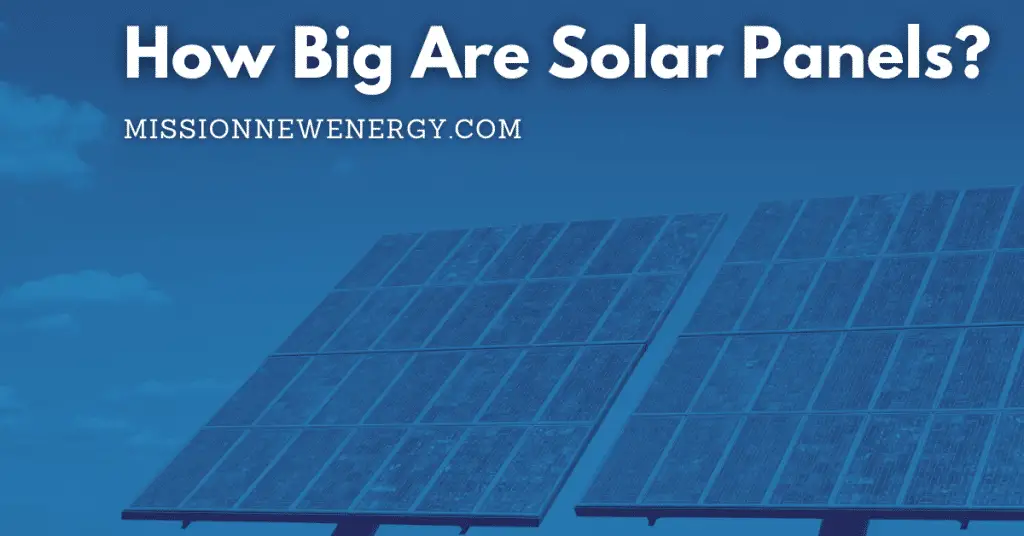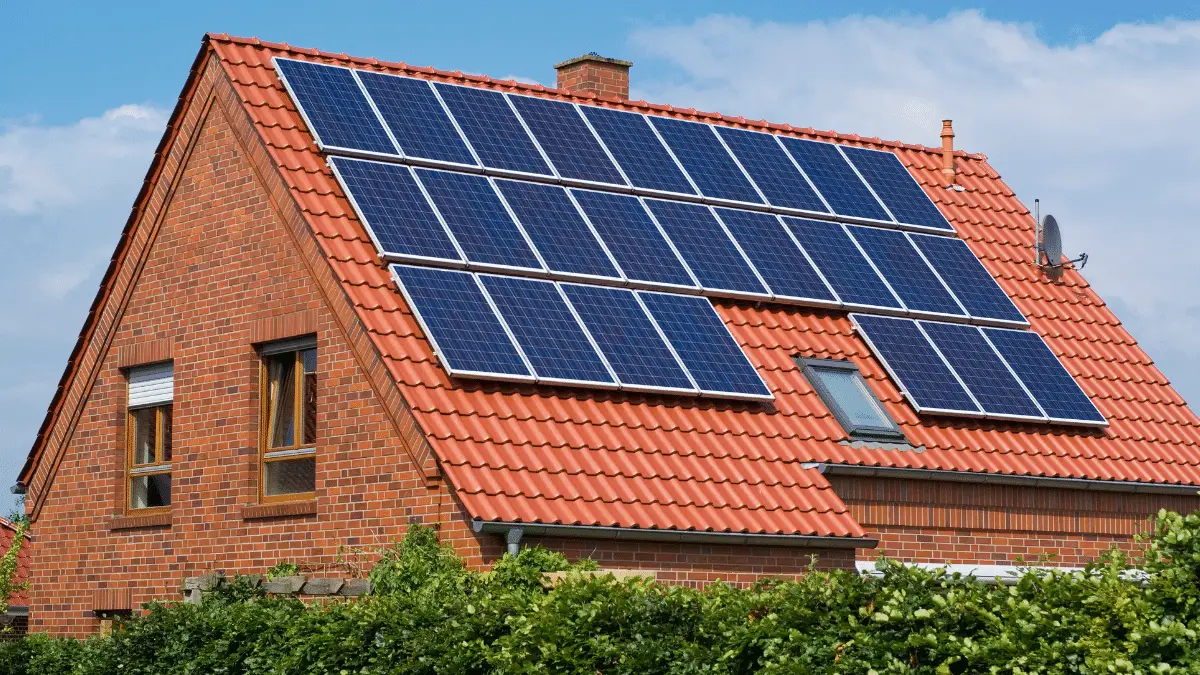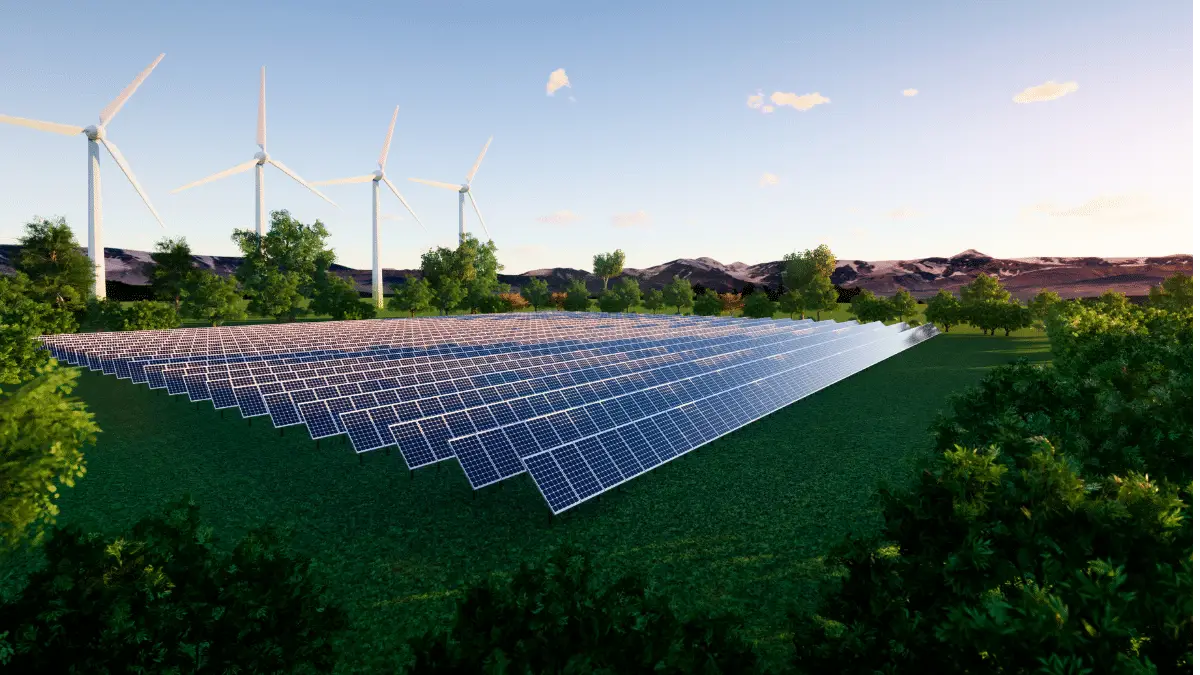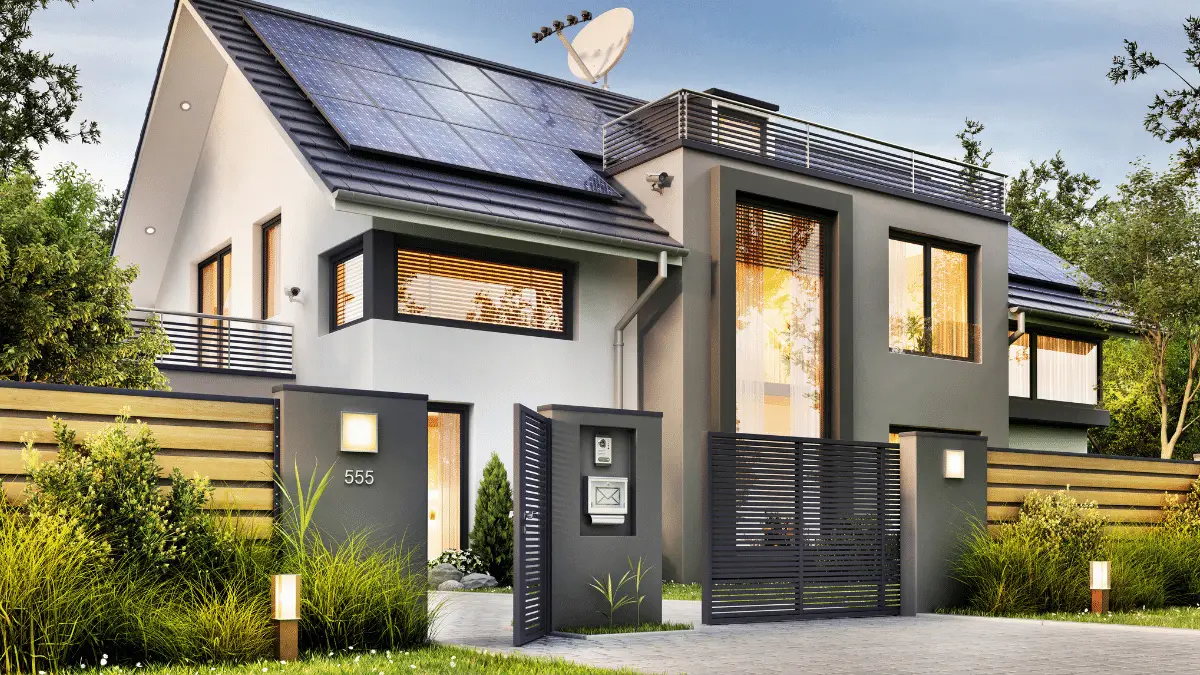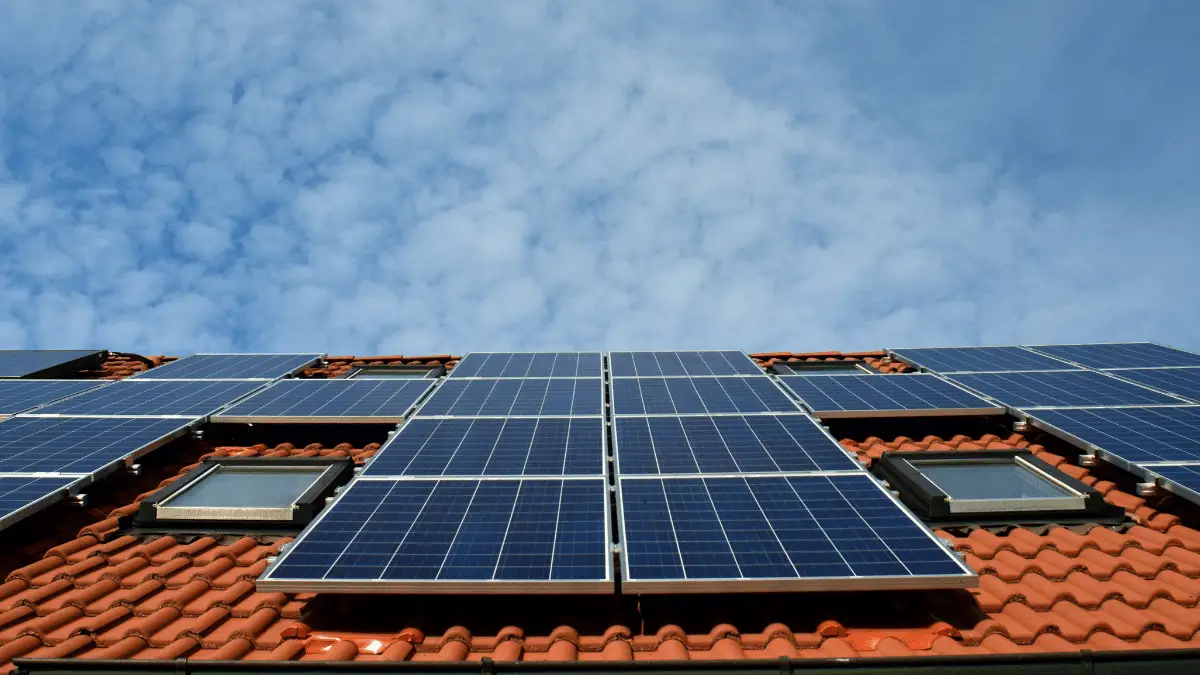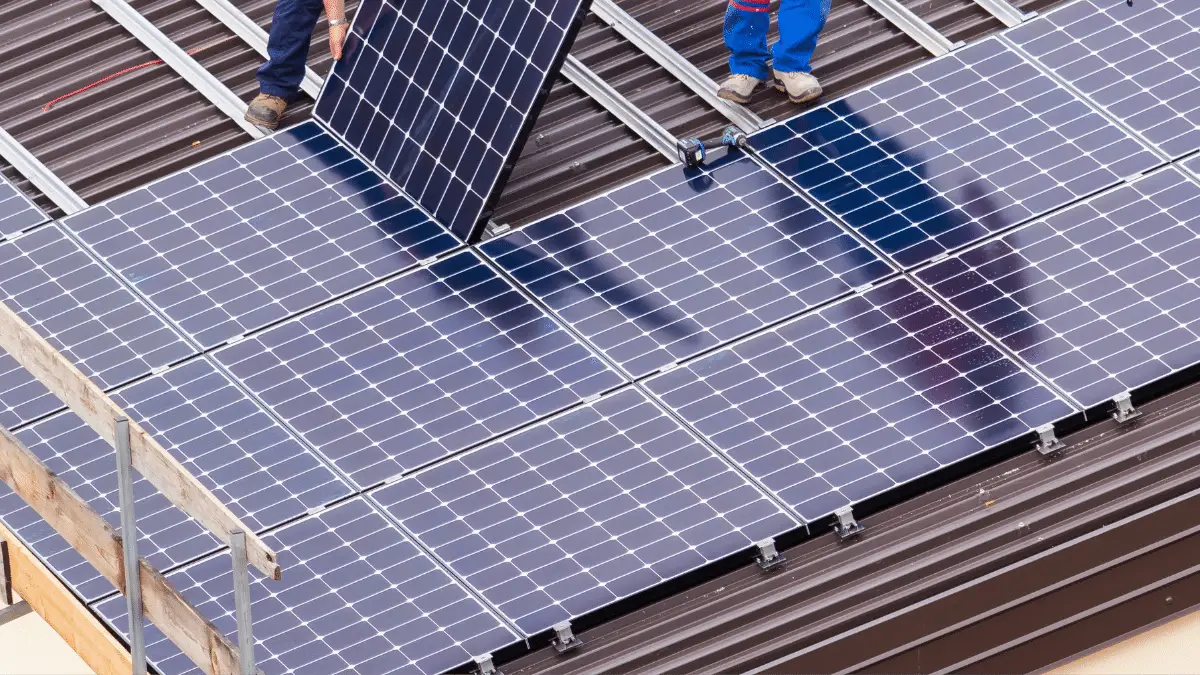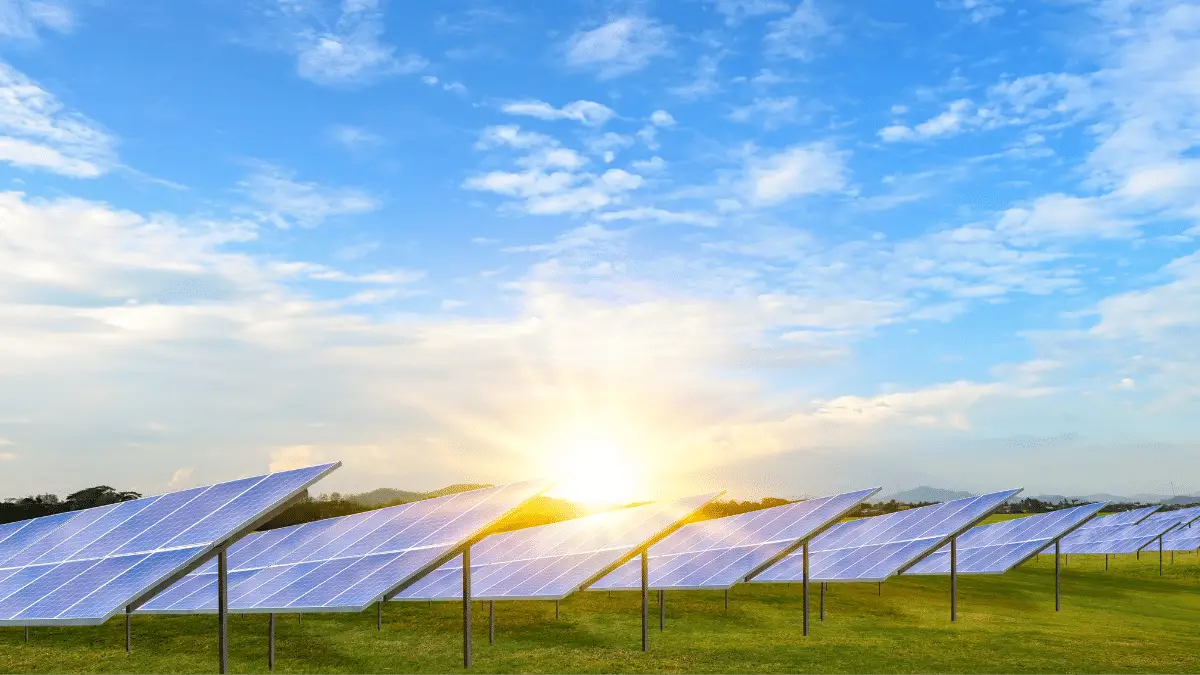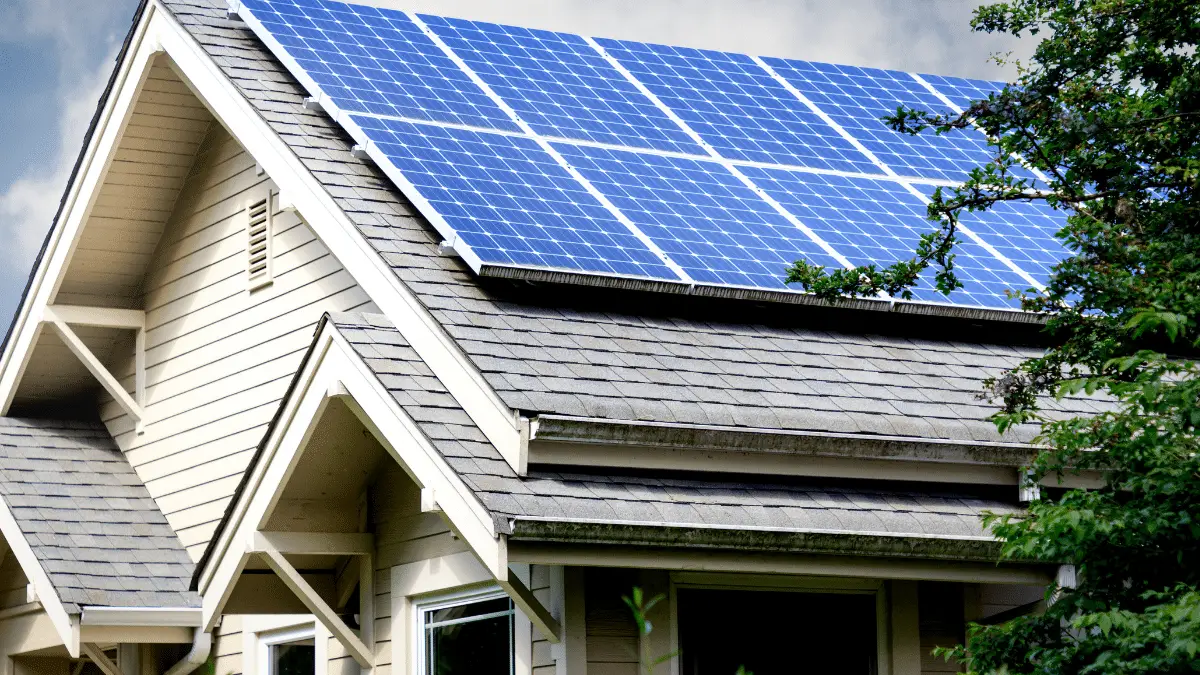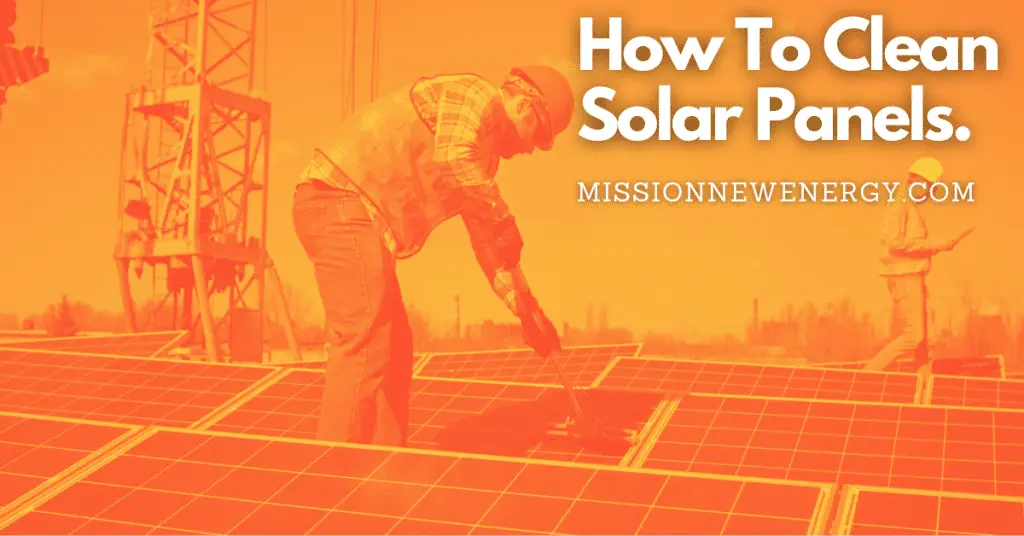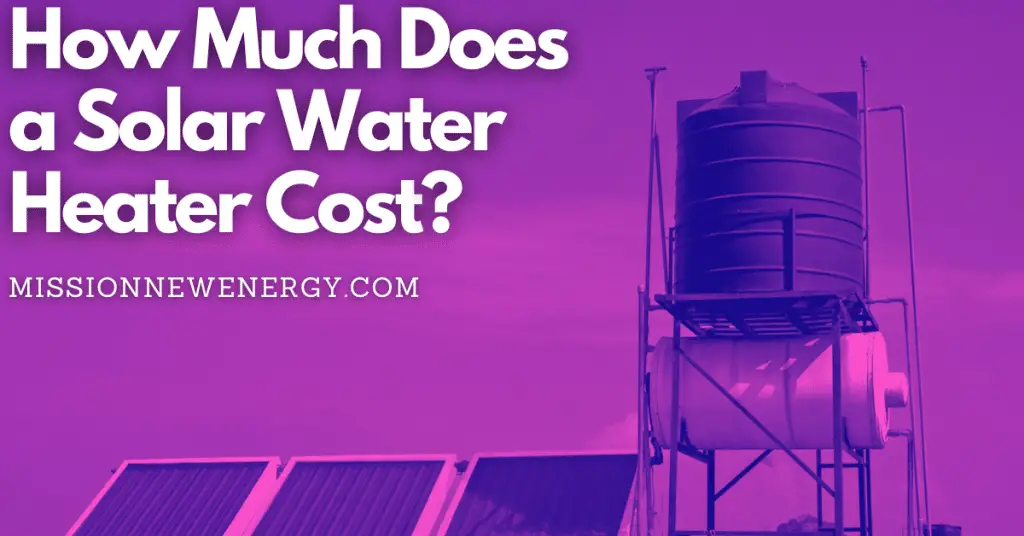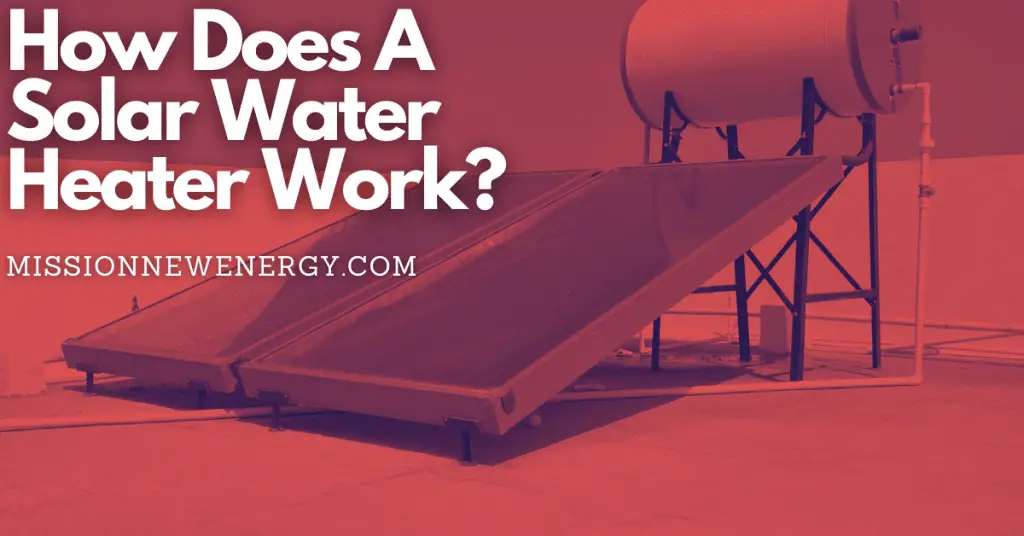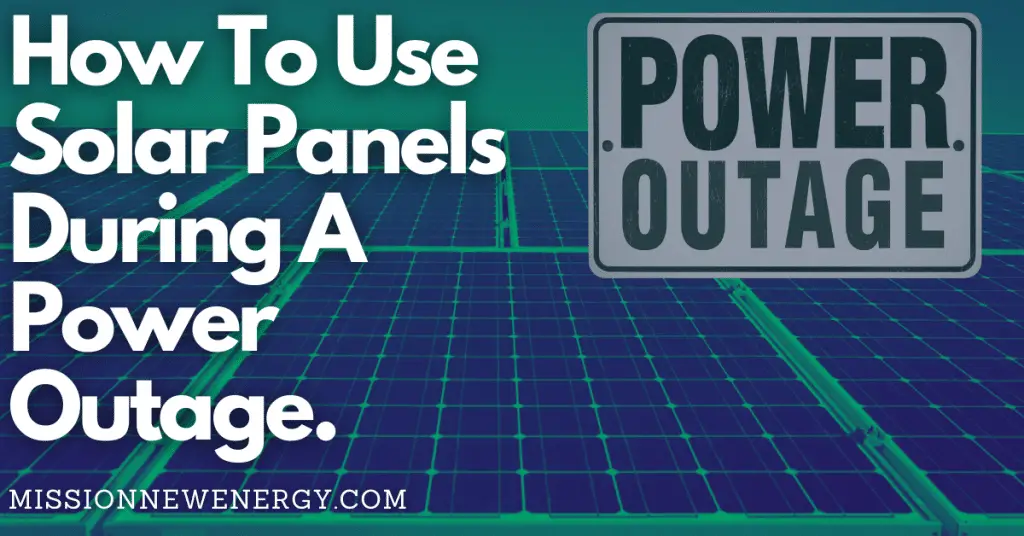Do you ever stop and wonder how big are solar panels?
When it comes to solar panels, size does matter. The size of your solar panel will impact how much power it can generate and that in turn will affect how much you save on your energy bills.
So, what are the typical solar panel sizes? And how do they compare to each other?
We’ll also explore some of the factors that affect their size, so, if you’re curious about solar panel sizes, carry on reading this article!
How Big Are Solar Panels?
Many factors set PV panels apart from other sources of power, but one of the most important is how much space they take up.
Most solar panels typically require at least two square meters (or about 6ft by 6ft) for every kW of electricity they generate in full sun. However, this can vary depending on the type and orientation of the panel.
Industrial solar farms can use arrays of PV panels that are miles long and wide to produce as much as gigawatts (billions of watts) of power. Still, even the smallest solar panel systems need at least a few square feet of space to generate enough electricity for your home.
The size of an standard solar panel depends on the number of cells embedded in it and its application. Understanding panel size (or weights) may be necessary for selecting sizes based on roof space and the type of customer (residential or commercial).
In general, the wattage of the solar panel is an indicator of size and weight.
The average solar panel size is 165.1 x 99.06 centimeters or 5.41 x 3.25 feet or 65 x 39 inches or 1651 x 990.6 millimeters or 1.65 x 0.99 meters, depending on whether it is for commercial or residential uses.
The thickness of PV panels varies between 32mm (1.25 inches) and 40mm (1.6 inches).
Commercial solar panel systems are considered the best way for business owners to save money on energy.
Commercial panels can be made up of hundreds or even thousands of individual solar cells that collectively generate electricity.
Since there are more modules, each module will weigh less than in an equivalent home system (which uses fewer modules).
On the other hand, portable PV panels with polycrystalline and monocrystalline cells can be found in a variety of sizes, from 60 to 96 solar cells, and typically reach a maximum output of 200 watts. When it comes to thin-cell, 100-watt-plus PV panels, there’s a lot of variation between products.
Solar cells are small, about the size of a postage stamp, or a little smaller.
Solar Panel Dimensions
Solar panels are an important part of any solar energy system, and their size and shape can vary depending on their intended use.
The most efficient solar panels are typically those that are larger in size, as they are able to capture more solar energy.
However, solar panels can also be designed to be compact and lightweight, making them well-suited for portable applications.
In general, solar panels can range in size from a few inches to several feet.
As such, it is important to select the right solar panel for your needs. With careful consideration of your solar panel dimensions, you can ensure that your solar energy system is highly efficient and effective.
Solar Panel Size In Feet
The average size in feet is 5.41 x 3.25 feet.
Size In Meter
The average physical size in meters is 1.65 x 0.99 meters.
Dimensions In cm
The average dimensions in cm is 165.1 x 99.06 centimetres.
Dimensions In mm
The average size in mm is 1651 x 990.6 millimeters.
How Much Do Solar Panels Weigh?
Most solar panels weigh around 40 pounds (18kg) each but you can get some panels weighing as little as 30-50 pounds (13-22 kg). The weight of the panel will depend on the size and type of panel.
Solar panels come in a variety of sizes, with the most common being about 4 feet by 2 feet. The average weight of a solar panel is about 2.5 pounds per square foot.
However, the weight can vary depending on the type of panel and the materials used. For example, monocrystalline panels are typically heavier than polycrystalline solar panels.
Solar panels are also available in thin-film or amorphous silicon varieties, which are among the lightest types of panels on the market.
SunPower Solar Panels
Solar panels are an increasingly popular way to generate renewable energy, and SunPower is one of the most well-known manufacturers of solar panels.
SunPower solar panels are known for their high efficiency, and they are often used in residential rooftop solar systems.
In terms of productivity, SunPower panels typically convert about 20% of the sunlight that hits them into electricity, whereas most other solar panels have an efficiency of around 15%.
This means that you need fewer SunPower panels to generate the same amount of power as other types of panels.
In addition, SunPower panels are designed to withstand harsh weather conditions and produce consistent power output over a lifetime of over 25 years.
Solar Panel Size Per KW
The annual output of a solar panel system ranges from 9 to 11 kilowatt hours (kWh) per square foot. You can expect to use about 850kwh of electrical current a year from your system that covers an area of 86 square feet with 1 kw.
Solar Panel Sizes and Wattage
The majority of solar panels are between 250 and 400 watts in power.. Once you know how many watts your solar system requires, figuring out how many solar panels you need is a simple matter of math. If you want a 5kW system, you’ll need a minimum of twenty 250-watt panels.
The Difference Between Residential and Commercial Solar Panels?
The two types of solar panels are residential and commercial.
Residential solar panels are typically smaller in size and weight than commercial solar panels.
They are also less expensive, making them a good option for homeowners who want to solar power their homes.
However, because they are smaller, they generate less electricity than commercial solar panels.
A 60-cell residential solar panel is the industry standard. The panel may also be built with a 72 cell module, which adds both to the panel’s power rating and size depending on the weight.
Commercial photovoltaic arrays are larger and heavier than residential solar panels. They are also more expensive, but they generate more electricity.
They are a good option for businesses that want to solar power their operations.
What is the effect of solar panel size?
The size of a solar panel is essential in determining the amount of power it can generate.
In general, larger solar panels have a higher wattage output than smaller solar panels.
Larger solar panels will also cost more money to produce and buy, but they can save because they can collect more energy over time.
How Big Is A 300w Solar Panel?
The number and size of solar cells used in the production of a 300 watt solar panel, as well as the ability of those cells, determine the panel’s physical size. According to the manufacturer, the most common size is 64.57″ by 39.06″ (1640mm x 922mm).
What Size Solar System Is Right For You?
Now that you understand solar panel size, let’s answer the big question: How much solar panels do you need?
The first step is to determine how much power you use. This information is readily available on your electric bill. Once you know your monthly usage in kilowatt-hours (kWh), you can begin sizing your system.
For a residential installation, the most common configurations are 6 kilowatts (kW), 8kW, 10kW, and 12kW. A 6kW system is usually sufficient for the average home, while a 12kW system will provide enough power for a larger home or one with higher energy usage.
The size of your solar system will also depend on the available space on your roof. Most panels are between 65 inches by 39 inches, but there is some variation among brands and models. If you have a smaller roof, you may need to install a smaller system.
Finally, the cost of your solar system will also play a role in determining its size. A larger system will obviously cost more to purchase and install, but it will also generate more power and save you more money in the long run.
To get an idea of how much a solar system will cost for your home, try getting multiple quotes from different solar providers. This will give you a good feeling of the range of prices you can expect to pay.
Keep in mind that the cost of a solar system is not just the price of the cells. It also includes the cost of batteries, inverters, mounting hardware, and other equipment. In addition, the cost of installation should be factored into your final decision.
Rooftop System
The first step in sizing a rooftop solar system is determining the available roof space. This can be done by measuring the length and width of your roof and multiplying those numbers together.
For example, if your roof is 50 feet long and 30 feet wide, you have 1,500 sq feet of space to work with.
Remember that not all that space will be used for solar cells. You’ll need to account for the pitch of your roof, obstacles like chimneys and skylights, and the amount of shade that falls on your roof throughout the day.
A good rule is that you’ll need about 100 sq feet of space for every kilowatt (kW) solar panel. So, if you want to install a 6kW system, you’ll need 600 sq feet of roof space.
If you don’t have enough space on your roof, you can always install solar panels on the ground.
However, this is usually more expensive and may require additional permits and approval from your local municipality.
Utility-scale System
A utility-scale system is a solar panel system that is used by a utility company to generate electricity for its customers. These systems are usually very large, with capacities of 500 kW to hundreds of megawatts.
Community Solar System
A community solar system is a solar panel system that is owned and operated by a local cooperative. These systems are usually smaller than utility-scale systems, with capacities of 1 megawatt (MW) or less.
Conclusion
When it comes to solar panels, size does matter. The bigger the panel, the more power it will produce. That said, there are a lot of factors that go into deciding which solar panel is right for your home or business.
A larger panel will produce more watts and therefore provide you with more energy.
However, a large solar panel is heavier and can be more challenging to install than a smaller one.
It’s essential to consider the size of your roof or installation area when deciding how big your solar panels should be.
If you are interested in installing solar panels on your home, contact your local solar installer to discuss what size solar panels would work best for you.

